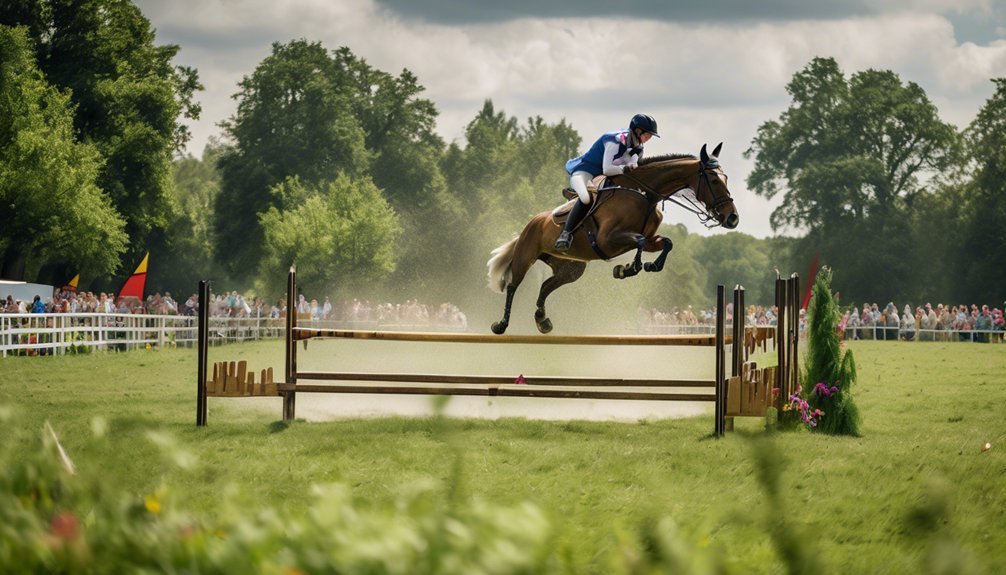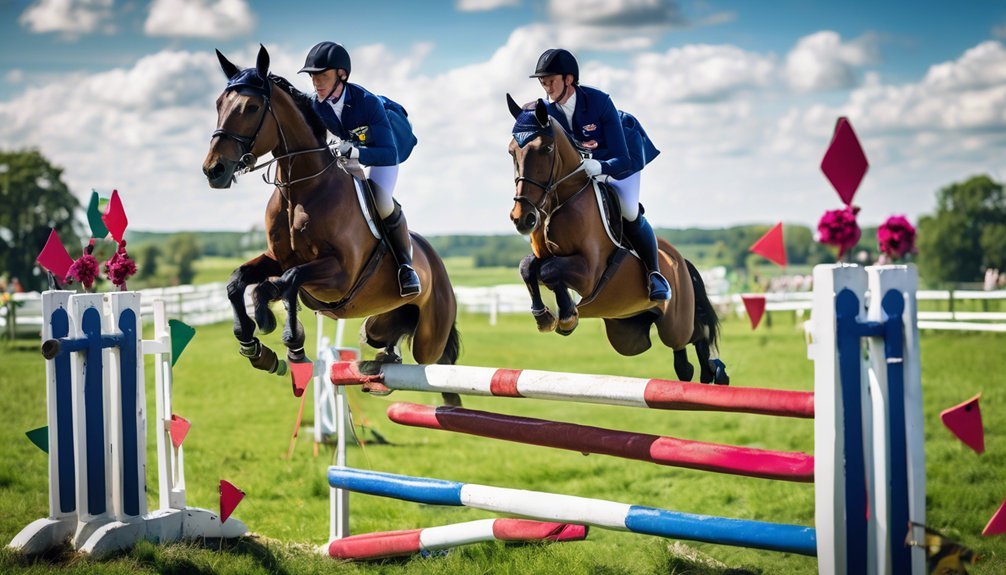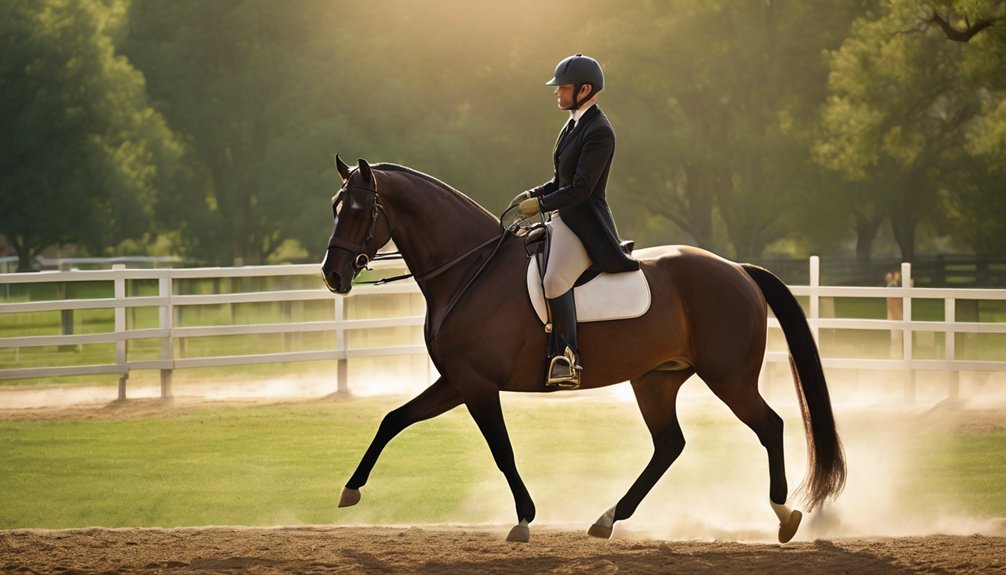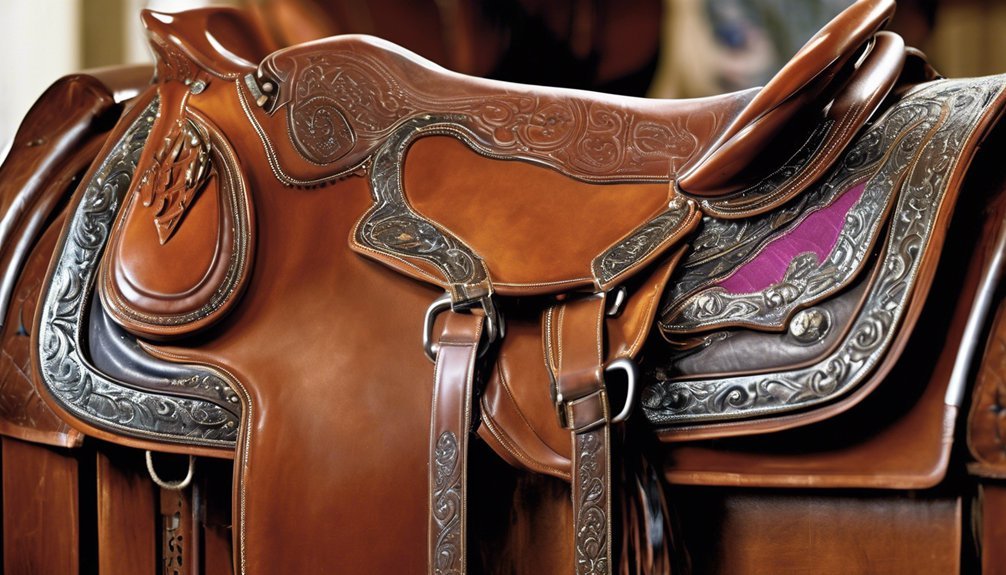
Navigating the world of eventing competitions can feel like a grand adventure, filled with both challenges and opportunities. Each level offers distinct experiences that shape your skills as a rider and your horse's abilities. As you progress, you'll encounter a variety of obstacles that demand more than just basic riding techniques. Understanding these levels is crucial for your development and success, but what insights can you uncover about the journey ahead?
Key Takeaways
- Eventing consists of three main disciplines: dressage, cross-country, and show jumping, each requiring specific skills and techniques.
- Levels of eventing range from introductory to preliminary, with each level increasing in complexity and skill requirements.
- Introductory events focus on basic movements and foster camaraderie among competitors, serving as a starting point for new riders.
- The novice level emphasizes horse responsiveness and building confidence, while training level focuses on refining skills and techniques.
- Preliminary level features complex courses and advanced movements, preparing riders for higher challenges in eventing competitions.
Overview of Eventing Competitions

Eventing competitions, often referred to as the triathlon of the equestrian world, combine dressage, cross-country, and show jumping into a single, thrilling event. This unique sport has roots in military training, evolving since the 18th century.
Understanding eventing history enriches your appreciation for the discipline's complexity and tradition. There are specific competition rules governing each phase, ensuring fair play and safety for both horse and rider.
Each level tests different skills, from technical precision in dressage to bravery and stamina in cross-country. As you delve deeper into eventing, you'll discover a vibrant community that shares your passion.
Engaging in this sport not only hones your abilities but also fosters lasting friendships with fellow equestrians.
The Beginner Level: Introductory Events
For those new to the world of eventing, introductory events serve as the perfect gateway into this dynamic sport.
You'll encounter beginner challenges that help you build confidence and develop essential introductory skills. Here are four key aspects of these events:
- Dressage: You'll learn the basics of movements and transitions, crucial for harmony between you and your horse.
- Show Jumping: This phase teaches you how to navigate obstacles while maintaining control and rhythm.
- Cross-Country: Experience the thrill of galloping over varied terrain, enhancing your balance and timing.
- Competition Atmosphere: Get used to the unique environment of events, fostering camaraderie among fellow competitors.
Embrace these experiences, and you'll find yourself growing both as a rider and a member of the eventing community.
Novice Level: Building Foundations
As you progress to the novice level, you'll encounter a more structured environment that builds on the skills acquired in introductory events. Here, foundation skills become crucial as you tackle new novice challenges.
You'll refine your horse's responsiveness and improve your ability to navigate varied terrains and obstacles with confidence. This level emphasizes consistency, helping you establish trust between you and your horse.
Expect to face questions that require strategic thinking and adaptability, pushing you to develop problem-solving skills. By focusing on these areas, you'll create a solid groundwork for future levels.
Embrace the journey, knowing that each challenge strengthens your bond and prepares you for the exciting adventures ahead in eventing.
Training Level: Developing Skills and Techniques

While you may have built a solid foundation at the novice level, the training level challenges you to refine your skills and techniques further. This stage is crucial for your development and focuses on key areas of skill acquisition and technique refinement.
Here are four essential aspects to concentrate on:
- Dressage Precision: Work on improving your transitions and maintaining rhythm to enhance your overall performance.
- Jumping Technique: Focus on correct distances and maintaining a balanced position over fences.
- Cross-Country Optimization: Develop your ability to read terrain and adjust your pace accordingly.
- Fitness Regimen: Ensure both you and your horse are in peak condition, as stamina plays a vital role in this level.
Embrace these challenges, and you'll see significant growth in your eventing journey.
Preliminary Level: Increasing Complexity
Once you've mastered the training level, the preliminary level introduces a new layer of complexity that tests your growing skills. At this stage, you'll face preliminary challenges that require not just technical skill but also mental fortitude. Rider preparation becomes crucial as you tackle more complex courses with varied obstacles, including larger jumps and more intricate combinations.
Here's a quick overview of what to expect:
| Element | Details |
|---|---|
| Jump Height | 3'3" to 3'7" |
| Cross-Country Fences | More challenging terrain features |
| Dressage Movements | Advanced transitions and patterns |
Embrace these challenges; they're essential for your growth and progression in eventing.
Intermediate Level: Challenging the Competitors
Having conquered the preliminary level, you're now ready to tackle the intermediate level, where the competition intensifies and challenges multiply.
At this stage, you'll sharpen your technical skills and build mental resilience. Here's what to focus on:
- Complex Jump Courses: Expect combinations that require precision and timing.
- Increased Dressage Difficulty: You'll face more advanced movements demanding finesse.
- Cross-Country Challenges: Navigate diverse terrain and varied obstacles that test your strategy.
- Time Management: Learn to balance speed and accuracy, as penalties for time faults can impact your score.
As you embrace these challenges, you'll not only develop as a rider but also strengthen your bond with your horse, fostering a sense of belonging within the eventing community.
Advanced Level: Showcasing Elite Equestrianism

As you step into the advanced level of eventing, you'll find yourself in a realm where elite equestrianism is on full display.
Here, elite riders demonstrate mastery over advanced techniques, pushing the boundaries of what's possible in the sport. Each competitor employs sophisticated competitive strategies, ensuring that every movement and decision is finely tuned for optimal performance.
You'll witness how meticulous performance analysis shapes their training, allowing them to adapt and refine their approach. This level isn't just about skill; it's a testament to dedication and passion, inviting you to appreciate the intricate bond between horse and rider.
Engaging with this elite community can inspire you to elevate your own journey in the world of eventing.
The Three Phases of Eventing
While eventing may seem like a single discipline, it's actually a triad of distinct phases: dressage, cross-country, and show jumping. Each phase tests different skills and demands from both you and your horse. Here's a breakdown:
- Dressage: You'll perform specific dressage tests that showcase your horse's training, obedience, and precision.
- Cross-Country: This phase challenges your endurance and bravery as you navigate various obstacles over varied terrain.
- Show Jumping: It combines agility and accuracy, requiring you to clear a series of jumps while maintaining speed and control.
- Overall Strategy: Each phase interconnects, requiring you to adapt your approach for success.
Embrace these phases, and you'll develop a deeper connection with your horse and the sport.
Scoring and Judging in Eventing
In eventing, success isn't just about mastering the three phases; how you're scored and judged plays a significant role in your overall performance. Understanding the scoring criteria is crucial.
Each phase—dressage, cross-country, and show jumping—has specific metrics that determine your score. Judges apply various judging techniques, assessing factors like precision, technique, and overall presentation.
In dressage, for instance, they'll look for harmony between you and your horse, while in cross-country, they'll evaluate your speed, efficiency, and jumping accuracy. Every penalty point counts, so a clear grasp of these elements can enhance your competitive edge.
Engaging with judges and asking for feedback can also foster a sense of community, helping you feel more connected to the eventing world.
Progressing Through the Levels: Tips for Success
To successfully progress through the levels of eventing, it's essential to set clear goals and develop a structured training plan. Here are some tips to help you stay on track:
- Set Specific Goals: Define what you want to achieve at each level and create measurable milestones.
- Focus on Mental Preparation: Work on visualization techniques and positive self-talk to boost your confidence in competitions.
- Schedule Regular Training: Consistency is key; establish a routine that balances riding, conditioning, and rest.
- Seek Feedback: Regularly consult with trainers or peers to gain insights and improve your skills.
Frequently Asked Questions
What Age Can a Horse Start Competing in Eventing?
Most horses can start competing in eventing around age four or five, when they show signs of competition readiness. It's crucial to assess their physical and mental maturity before entering any events for success and safety.
How Are Eventing Competitions Regulated in Different Countries?
As you navigate the colorful world of eventing, you'll notice country differences in eventing regulations. Each nation shapes its rules, influencing everything from course design to safety standards, creating a unique tapestry of competitive spirit.
What Equipment Is Mandatory for Eventing Riders?
In eventing, you need mandatory safety gear like helmets and body protectors. Rider attire should be comfortable yet professional, ensuring you feel confident and connected with your horse while adhering to competition standards.
How Do Weather Conditions Affect Eventing Competitions?
How's the weather impacting your competition safety? Rain or high winds can make courses slippery and dangerous, while extreme heat can lead to dehydration. Always stay informed and adapt your strategies to ensure both you and your horse's safety.
What Are Common Injuries in Eventing Horses?
Injuries in eventing horses often include tendon strains and joint issues. You can enhance injury prevention through proper warm-ups, while rehabilitation techniques like controlled exercise and physiotherapy promote healing, ensuring your horse stays fit and healthy.
Conclusion
In the world of eventing, each level you conquer is like climbing a staircase, with every step enhancing your partnership with your horse. As you progress from the beginner to advanced levels, remember that patience and practice are your allies. Embrace the challenges, learn from them, and celebrate your growth. Each competition is not just a test, but a stepping stone on your journey to becoming a skilled and confident equestrian. Keep striving, and let your passion guide you forward!





